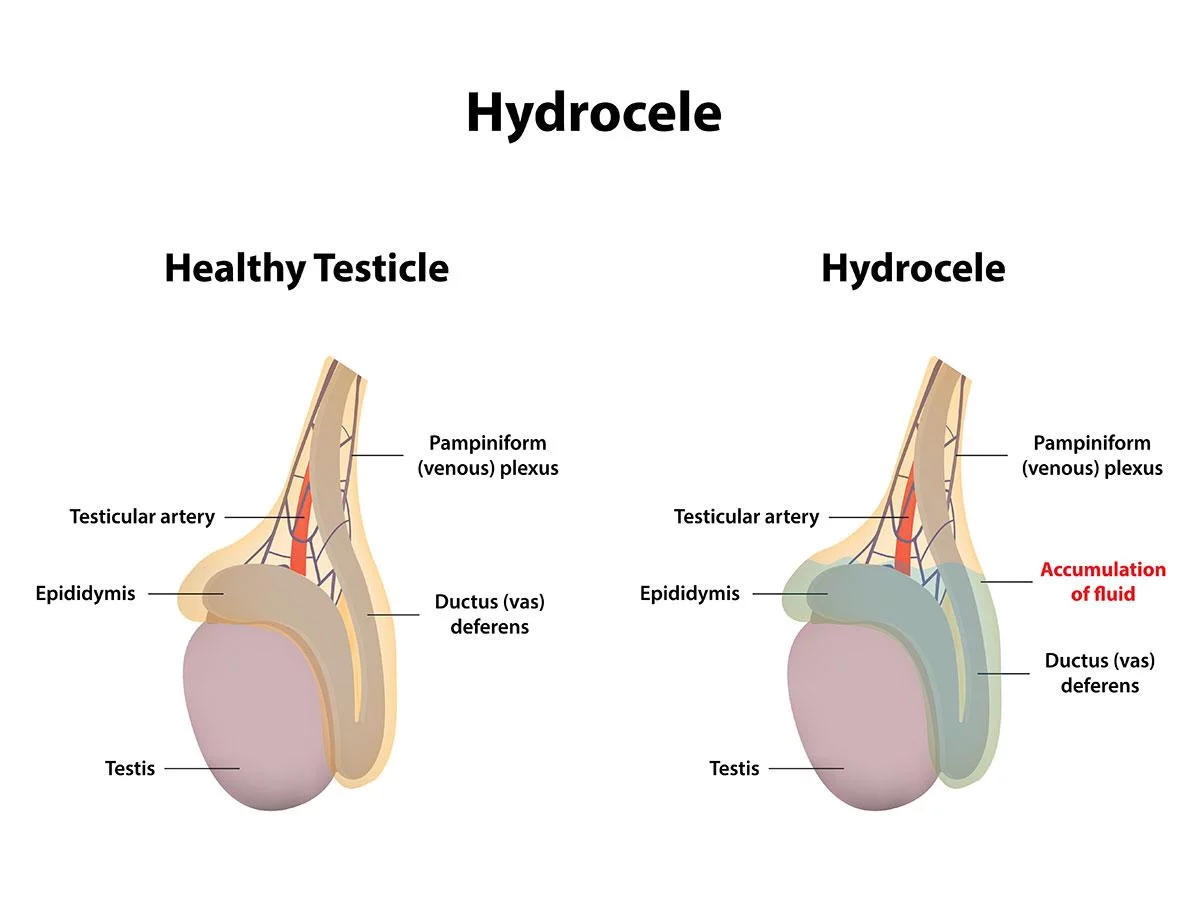Surgical Treatment for Fluid Around the Testicle
A hydrocele is a build-up of fluid around the testicle within the scrotum. While often seen in newborns, hydroceles can also occur in adult men, especially after the age of 40. Although generally benign and painless, larger hydroceles may cause swelling, discomfort, or a sensation of heaviness, and may eventually require treatment.
In adults, hydroceles may develop due to:
- Blocked lymphatic drainage in the spermatic cord
- Inflammation or infection of the testicle or epididymis
- Scrotal trauma
- Previous surgeries such as inguinal hernia repair
- Association with tumours in the scrotal or testicular region

Who Is Suitable for Hydrocele Repair?
Surgical repair may be recommended if:
- The hydrocele has persisted for several months and is increasing in size
- You experience swelling on one side of the scrotum
- You have pain or discomfort in the testicles
- There is a sense of heaviness or pressure
Small, asymptomatic hydroceles typically do not require treatment.
What Are the Benefits of Surgery?
- Provides a long-term solution to symptomatic hydroceles
- Reduces discomfort, swelling, and associated complications
- Low risk of recurrence compared to non-surgical treatment
What about aspiration?
Aspiration (draining the fluid with a needle) may be offered in select cases. However, the fluid often returns, and there is a higher risk of recurrence and infection. Surgery is more definitive and reliable.
How Is Hydrocele Repair Performed?
- Performed under general anaesthesia
- A small incision is made in the scrotum
- The fluid is drained, and the hydrocele sac is either removed or everted to prevent recurrence
- The wound is closed with dissolvable sutures
- The procedure typically takes 30–45 minutes
What to Expect After Surgery
- This is usually a day procedure, and you can go home the same day
- Some swelling, bruising, or mild pain is common and typically resolves within 1–2 weeks
- The scrotum will appear smaller following fluid removal
- A slight thickening of the tissue is normal and may take a few months to resolve
- Rest and limited activity are recommended for the first week
Post-Operative Care
What to Expect:
- Bruising and swelling may persist for several weeks
- Mild bleeding from the wound is normal in the first few days
- Wearing supportive underwear can reduce discomfort and swelling
- Pain is usually well controlled with paracetamol or ibuprofen
Wound care:
- You may shower after 24 hours, but avoid soaking in a bath for at least one week
- Keep the wound clean and dry
Return to Activity
- Driving: Avoid for at least 1 week and until you are pain-free
- Work: Light duties may be resumed after 1 week, depending on your job
- Heavy lifting: Avoid for 2 weeks
- Exercise and sports: Avoid strenuous activity for 1 week, then resume gradually
- Sexual activity: Avoid for 2 weeks, or until comfortable
Pain Management
- Supportive underwear is recommended for comfort
- Pain is typically mild and managed with paracetamol or ibuprofen
- Avoid aspirin unless directed, as it may increase bleeding risk
When to Seek Medical Help
Contact your doctor or attend your nearest emergency department if you experience:
- Severe or increasing pain not relieved by medication
- Progressive swelling or bruising (may indicate bleeding)
- Fever, chills, or shakes (may indicate infection)
- Inability to urinate
Follow-Up Appointment
Our clinic will arrange a follow-up visit with your urologist approximately 6–8 weeks after surgery to review your recovery and discuss any concerns.
